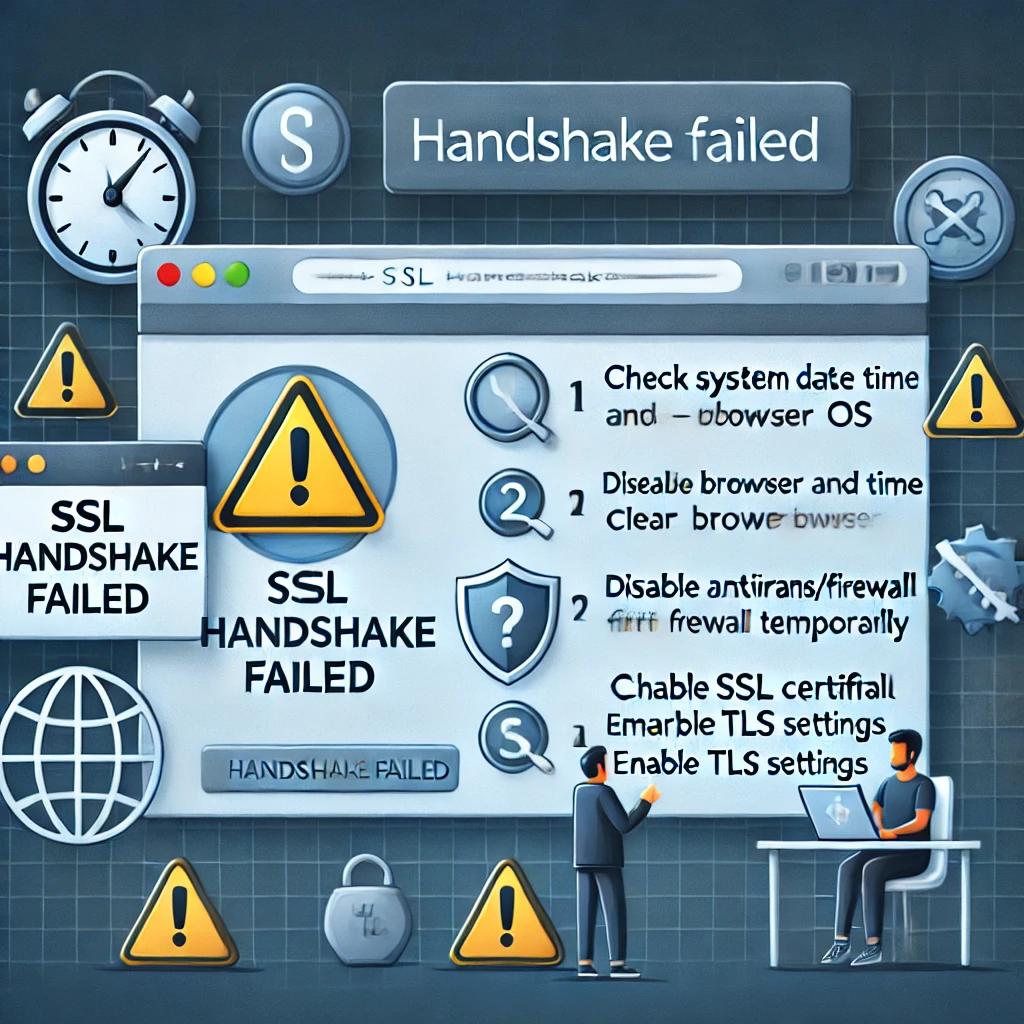How to Fix the SSL Handshake Failed Error: A Complete Guide
 Judy page
Judy page
The SSL handshake failed error can be upsetting, particularly if you are trying to reach a secure website. This error happens when your browser and the web server fail to establish a secure connection with each other. In this article, you will get to know the common reasons for this issue and how you can fix them.
What Causes the SSL Handshake Failed Error?
Several things can cause this error, including:
Incorrect system time – If your computer’s date and time are wrong, the SSL handshake may fail.
Outdated browser or OS – Users should be warned that outdated versions of their operating systems might not support newer SSL/TLS protocols.
Misconfigured server settings – The website’s SSL settings might not be properly configured.
Blocked by firewall or antivirus – Security software can interfere with the connection.
Certificate issues – SSL certificates can fail if expired, revoked, or untrusted.
Steps to Fix the SSL Handshake Failed Error
1. Check Your System Date and Time
A simple but common reason for SSL errors is an incorrect system clock.
On Windows, go to Settings > Time & Language > Date & Time, then enable Set time automatically.
On Mac, go to System Preferences > Date & Time, and check the time is correct. Enable 'Set date and time automatically' to avoid errors.
2. Update Your Browser and Operating System
Older versions of browsers or operating systems can cause failure of the latest SSL/TLS protocols.
Update your browser to the latest version to confirm it supports modern SSL/TLS protocols and security features.
Make sure the operating system is updated with the latest security patches.
3. Clear Your Browser’s Cache and Cookies
Reserved cookies and cached data can sometimes interfere with SSL connections.
In Chrome, go to Settings > Privacy and Security > Clear browsing data.
Select Cookies and other site data and Cached images and files, then click Clear data.
4. Disable Antivirus or Firewall Temporarily
Some antivirus programs block SSL/TLS connections. Temporarily disable your antivirus or firewall and check if the SSL error disappears. If it does, add the website to your antivirus's trusted sites list..
If disabling fixes the problem, add the website to your trusted sites list in your antivirus settings.
5. Check for Certificate Issues
If you own the website, check if your SSL certificate is valid and not expired.
Use an SSL checker tool to verify your certificate’s status.
6. Enable the Correct TLS Version
Some websites require specific TLS versions for secure connections.
In Chrome, type chrome://flags/ in the address bar and search for TLS settings.
Confirm your browser supports TLS 1.2 and TLS 1.3. Most browsers enable them by default, but you can check your settings under security preferences.
7. Reset Your Network Settings
If none of the above work, resetting network settings might help.
Open Command Prompt (Windows) and run:
netsh winsock reset
ipconfig /flushdns
Restart your computer and try accessing the site again.
Read Also - How to Fix “ERR_SSL_PROTOCOL_ERROR” for Google Chrome
Conclusion
The SSL handshake failed error can be caused by minor issues like incorrect time settings or major problems like expired certificates. By following these methods, you can solve the error with barely any delay. If you are still facing the issue after performing all the mentioned steps, then you should contact your hosting or internet service provider for further assistance.
Subscribe to my newsletter
Read articles from Judy page directly inside your inbox. Subscribe to the newsletter, and don't miss out.
Written by

Judy page
Judy page
Experienced Computer Specialist with a demonstrated history of working in the information technology and services industry.